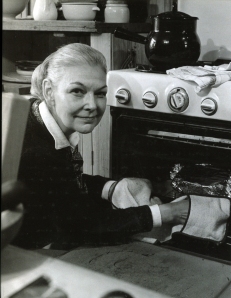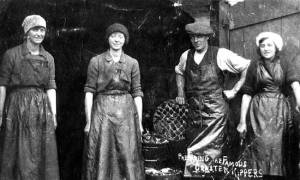
Elizabeth David. Image from http://grazingforgirls.blogspot.co.uk
“If I had my way – and I shan’t – my Christmas Day eating and drinking would consist of an omelette and cold ham and a nice bottle of wine at lunchtime, and a smoked salmon sandwich with a glass of champagne on a tray in bed in the evening.” From Elizabeth David’s Christmas (2003) edited by Jill Norman, p.11.
Hooray for Elizabeth David (1913-1992). I love her for wanting to go against the grain and, in the current frenzy of Christmas preparations, the quote above is a refreshing reminder that the simple pleasures are often the best.
Elizabeth David’s Book of Mediterranean Food (1950) is often cited as the book that began to transform British cookery after the Second World War. My Mum had a copy and I am sure we ate better because of it. If that was the only book she wrote, it would be enough for her to qualify as a food heroine but she produced many other beautifully research books that are written in a way that makes you want to taste the food she describes. My favourites are Summer Cooking (1955), English Bread and Yeast Cookery (1977) and The Harvest of the Cold Months: the social history of ice and ices (1994).
She knew her own mind and, although I know that she often spent Christmas with her sister’s family, I suspect that sometimes she did get her wish and retired to bed with a glass of champagne. To find out more about her character and her rather adventurous life read Lisa Chaney’s biography Elizabeth David or the one by Artemis Cooper, Writing at the Kitchen Table.

